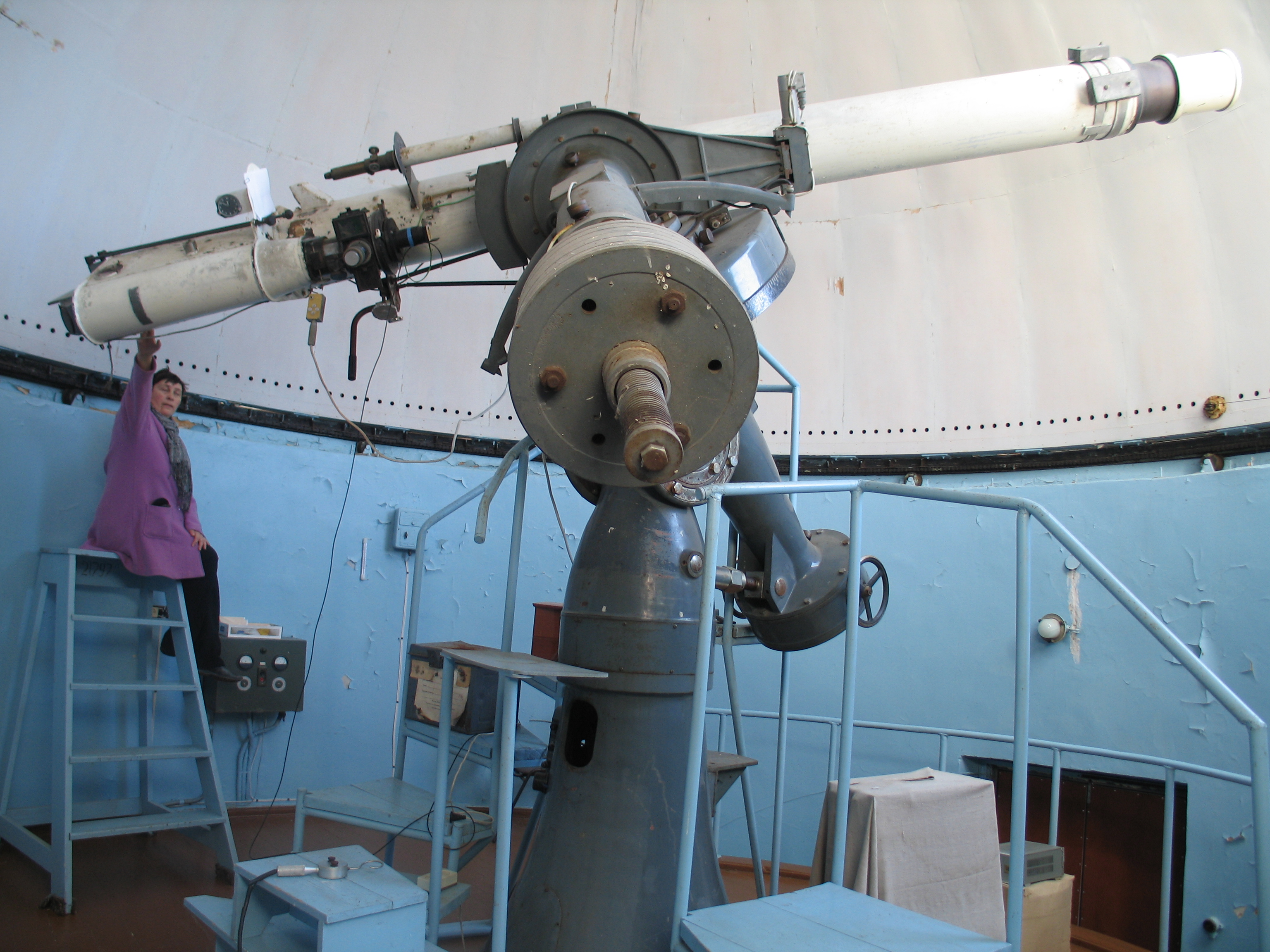AZT-8: History of the telescope
Firstly the AZT-8 was installed in Simeiz in 1964. It was used for photoelectric photometry and polarimetry as well as for TV observations. Main goal of the observations was symbiotic and double stars (T.S.Belyakina, E.S.Brodskaya), T Tau-stars (P.P.Petrov), UV Cet-stars (P.F.Chugainov).
In 1977 AZT-8 was transferred to Nauchny and installed in a new large pavilion with a shifting roof. Here AZT-8 was used to test a multichannel spectrometer constructed by A.F.Lagutin, L.V.Granitsky, A.B.Bukach et al. at the CrAO as a ground model for a device on board of the space mission "Astron". Main elements of the construction were designed and some particularites of the scanning drive and technical data of device were considered.
As a by-product the rapid variations of the atmospheric extinction was investigated, and energy distribution of some C-type-stars was obtained.
In 1990-s the photometric equipment for wide-range stellar photometry was developed in the Crimean Astrophysical Observatory in collaboration with Astronomical Institute of St.Petersburg University. Two telescopes (AZT-8, 0.7 m, F/18 and AZT-7, 0.2 m, F/10) on the same mount were equipped, correspondingly, with JKLM-photometer and BVR-photometer. The system permits to obtain simultaneous energy distribution for various stars in the range 0.4-5.0 mcm. The multicolor photometry of some X-ray-sources was carried out by V.M.Larionov, and some results of the BVR-photometry of RV Tau-type-stars were obtained by V.I.Burnashev.
AZT-8: Instrumentation and methods
Equipment
CCD-camera AP7p
Characteristics
| Filters | B, V, R, R1, I |
| Frame size | 512×511 pixels, 15′×15′ |
| Pixel size | 24 μm, 1″.755/pixel |
| Readnoise | 13e- |
| Gain | 5.6 |
| Well Depth | 210000 e- |
The Large Coronograph KG-2


The Lyot type coronograph with 53 cm one lens objective (f/15) and Coude focus is equipped with a 8 m diffraction spectrograph (f/20), 0.5 Å H-alpha birefringence filter and a device for photographic registration of linear polarization in details of solar emission.
АAstronomical Reflecting Telescope 8 (AZT-8)


The two-mirror telescope AZT-8 was manufactured by the Leningrad Optical-Mechanical firm (LOMO) in 1964. The optical system of the telescope is Cassegrain. It has an 70 cm main parabolic mirror with f/4, two secondary mirrors that give Cassegrain foci f/16 and f/40 with good fields of 40 and 18 arcmin. The primary focus gives a good field near 10 arcmin.
| Main mirror | 70 cm |
| Focal length | 282 cm |
| Optical systems |
Primary focus (f/4), Cassegrain focus (f/16, f/40) |
| Instrument | BVRI Photometer with Apogee AP7p CCD-camera |
The Large Coronograph KG-1


This telescope with 21 cm one lens objective (f/17) and equivalent focus 5 or 13 m is equipped with Halle 0.5 A H-alpha filter is used as a chromospheric telescope with registration on 35 mm film. You may search obslog for the observational data obtained during last years.
From the 50th the Crimean Observatory actively participates in the World Solar Service. Observatory carries out measurements of the sunspot magnetic fields and takes part in the flare patrol and observations of a solar radio flux in several wavelengths.
Methods of solar flares forecast have been developed and operative forecasting is provided during many years.
Optical scheme




